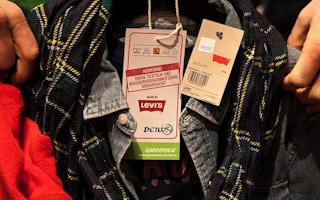In the wake of the recent tragedy in Bangladesh, approximately 1.1 million people signed on to a campaign run by the advocacy group Avaaz pressuring retailers to invest in worker safety. Soon afterward, H&M, one of the brands targeted by the campaign, decided to sign a landmark fire and building safety accord. More than 40 global companies also have signed the accord, and activists are continuing to push the brands that have been reluctant to sign it.
The recent participation in these campaigns seems to indicate a shift in how consumers are thinking about the origins of their clothes, but when they actually enter the dressing room, will a company’s social and environmental track record determine their choice of jeans?
On the one hand, studies point to a rising consumer consciousness. The public relations firm Cone Communications released findings in late May that nine out of 10 consumers say they would boycott companies that are being irresponsible, and more than half of consumers in 10 countries say they have refused to buy a product in the past year because of perceived poor corporate behavior. A study earlier this year found that a majority of consumers across six markets (Brazil, China, Germany, India, the UK, and the United States) are seeking to reconcile their desire for shopping and style with their sense of responsibility for the environment and society.
These reports identify a rising new mainstream: style and social status-seeking “Aspirationals” who represent hundreds of millions of consumers and the largest consumer segment in Brazil, China, and India. More than any other segment, Aspirationals care about style (65 per cent), social status (52 per cent), and they equate shopping with happiness (70 per cent). Yet they are also among the most likely to believe that we need to “consume a lot less to improve the environment for future generations” (73 per cent), and feel “a sense of responsibility to society” (73 per cent).
This survey echoes another report published by WRAP UK on sustainable fashion consumption. It points to an emerging class of consumers who are eager to change certain consumption habits for the better and are asking for guidance and support in doing so. For example, a majority of surveyed consumers were interested in buying better quality, more durable clothing, but many were unsure how to recognise a well-made garment. Quality does not necessarily mean the product was produced with the highest labour or environmental standards, but this could be a counter-trend to resource-intensive, throw-away fast fashion.
The challenge will be to turn the consumers who are willing to pay more for better quality apparel into consumers who are willing to pay more for quality and sustainability. Unfortunately, according to surveys by Cotton Incorporated, only 26 per cent of shoppers are willing to pay more for clothes labeled as sustainable or environmentally friendly.
One could argue that the lure of fast fashion is too powerful and widespread. People will buy what’s convenient, looks cute, and fits their budget. And as middle classes in the BRICS countries grow, it’s normal to expect that they’ll celebrate their hard-earned purchasing power by spending on life’s little luxuries.
But to remain overtly pessimistic would, in my view, discount the deeper societal trends indicated by these recent studies and activist activities. A growing number of consumers seem to be telling us that they want it all: style with substance, the chance to shop and to feel good about what they are purchasing. Many brands have caught on to this trend—whether smaller, purpose-driven brands such as TOMS or Warby Parker, or larger companies such as Marks and Spencer, whose Shwopping initiative has prompted consumers to return 11 million garments for donation to Oxfam.
Certainly, we can’t confuse a brand’s efforts at charity with its commitment to creating products with a sustainable life cycle. But those brands working toward more socially and environmentally sustainable products benefit from a strong differentiator in a crowded marketplace. One opportunity could be evolving the fast-fashion business model to focus less on volume and more on quality, with an emphasis on sustainability. In BSR and Futerra’s Sustainable Lifestyles Frontier Group, nine companies have come together to build the business cases for new, more sustainable models.
Another opportunity involves engaging consumers and employees in efforts to improve factory conditions. Retailer ANN INC., for example, participates in BSR’s HERproject and shares stories about the programme on its website, while another participating retailer, Primark, has created a film that allows consumers to “meet” the women who make the company’s clothes. Other manufacturers such as TS Designs (a B Corp) codes its shirts so that wearers can discover the entire supply chain of the shirt, including all the people involved in making it, with a single click.
These initiatives speak to our universal desire for connection. In a world with far-flung supply chains and far-reaching social activism campaigns, it appears that consumers may finally be paying attention to—and potentially willing to pay the price for—more sustainable products. That presents a powerful opportunity for brands as we begin to make sense of what happened at Rana Plaza.
Note: This is part of a series of BSR articles on the tragedy in Bangladesh that will look at root causes, challenges, and how to prevent it from happening again. This post originally appeared here.
Elisa Niemtzow is the associate director for consumer products at BSR.










